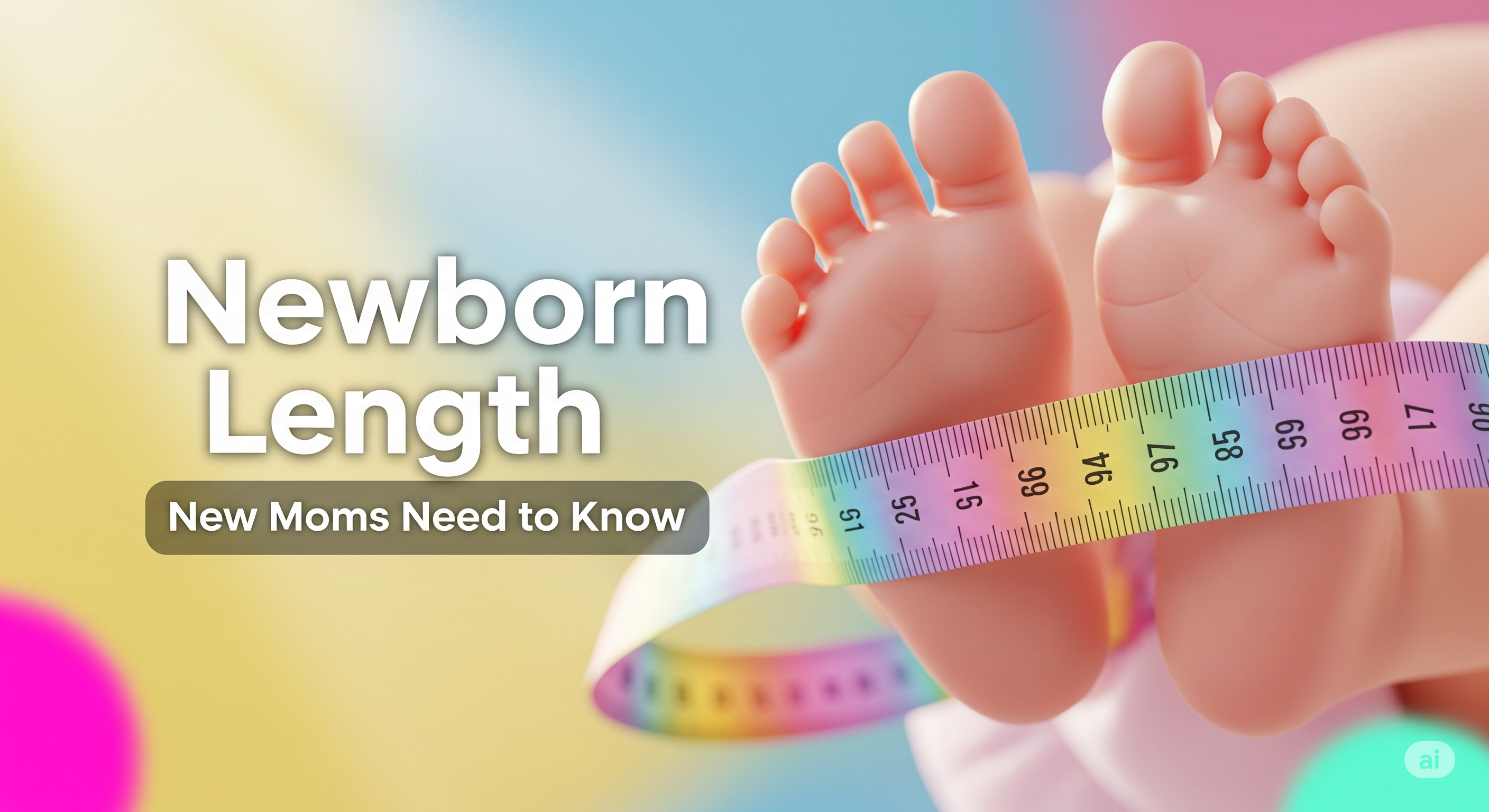The Challenge: A Deeper Look
Introduction
For many new moms and pregnant women, one of the first questions after delivery is, “How big is my baby?” Along with weight, length is one of the key newborn measurements taken immediately after birth. These numbers often become part of a family’s memory—written in baby books, shared with grandparents, and proudly compared with siblings or cousins.
The average newborn length provides an important snapshot of a baby’s early development. However, it’s equally important to understand that healthy babies come in a wide range of sizes. Genetics, pregnancy health, and timing of delivery all influence a baby’s length at birth. Whether your baby is on the shorter or longer side, most variations are completely normal and nothing to worry about.
In this guide, we’ll explore the average newborn length, what factors affect it, how babies grow in their first few months, and when parents should consider consulting a pediatrician. By the end, you’ll feel reassured and confident in understanding your baby’s growth journey.
Your Path Forward: Practical Solutions
Average Newborn Length
According to data from the World Health Organization (WHO) and the Centers for Disease Control and Prevention (CDC), the average length of a full-term newborn is:
- About 19 to 20 inches (48 to 51 centimeters)
The typical range is:
- 18 to 22 inches (45 to 55 centimeters)
This means that whether your baby measures a bit shorter or taller, they are most likely within a completely healthy spectrum.
How length is measured
In the hospital or at the pediatrician’s office, length is usually measured with the baby lying flat on their back. A healthcare professional gently stretches the legs and uses a specialized measuring board to get an accurate reading. This measurement is then plotted on a growth chart, which helps track your baby’s development over time.
Factors Influencing Newborn Length
Not every baby is born at the same size. Several biological and environmental factors influence how long a newborn is at birth:
- Genetics
Parental height plays a significant role. Babies of taller parents tend to be longer, while those of shorter parents may measure slightly below average. This is a natural reflection of family genetics. - Gestational Age
Preterm babies (born before 37 weeks) are often shorter and lighter because they had less time to grow in the womb. Post-term babies (born after 42 weeks) may be slightly longer than average. - Nutrition During Pregnancy
Maternal nutrition is a key factor in fetal growth. A balanced diet rich in protein, healthy fats, vitamins, and minerals supports optimal baby development. Poor maternal nutrition or pregnancy complications such as gestational diabetes or preeclampsia can impact newborn size. - Multiple Births
Twins, triplets, or higher-order multiples are usually born smaller in both weight and length due to limited space in the uterus. This is completely expected and usually not a cause for concern. - Baby’s Sex
On average, male newborns tend to be slightly longer than female newborns. However, the difference is minimal and often not noticeable without measurement.
What to Expect in the First Few Months
The first months of life are a period of rapid growth. New moms often notice their babies outgrowing clothes almost overnight!
- Average growth rate: Babies typically grow about 1 inch (2.5 cm) per month during the first 6 months.
- By around 3 months, many babies will have grown 3–4 inches (7–10 cm) from their birth length.
- Growth spurts are common, where babies may suddenly grow faster over a short period.
Growth monitoring
Your pediatrician will measure your baby’s length, weight, and head circumference at each check-up. These measurements are plotted on WHO or CDC growth charts, which show how your baby compares with peers of the same age and sex.
Reassurance for parents: Even if your baby is on the smaller or taller side of the chart, what matters most is that they are growing steadily along their curve.
The Reward: Embracing the Benefits
When to Be Concerned
While most differences in newborn length are normal, there are situations where further evaluation may be needed. Contact your pediatrician if you notice:
- Significant deviation from the average (much shorter or taller than expected).
- Failure to thrive – if your baby is not gaining length or weight consistently over time.
- Disproportionate growth – for example, if the head grows much faster than the rest of the body.
- Underlying health conditions – certain genetic, hormonal, or metabolic disorders can affect growth.
Remember: only a healthcare professional can determine whether a baby’s growth pattern is a concern. Regular check-ups are the best way to ensure your newborn’s healthy development.
Tips for Measuring Your Baby’s Length at Home
While professional measurements are the most accurate, some parents like to track their baby’s growth between appointments. Here are a few tips:
- Lay your baby on a flat, safe surface (such as a changing mat).
- Use a soft tape measure or mark the length on a piece of paper.
- Gently stretch your baby’s legs for accuracy, but never force them.
- Measure at the same time of day for consistency.
Tip: Focus more on overall trends rather than exact numbers, since small differences in home measurements are common.
Conclusion
The average newborn length is around 19–20 inches (48–51 cm), but babies come in many perfectly healthy sizes. Genetics, nutrition, and gestational age all play a role in determining how long your newborn will be at birth.
The most important thing is not whether your baby is above or below average, but whether they are growing steadily over time. With proper care, nutrition, and regular pediatric visits, most babies thrive and reach their developmental milestones at their own pace.
Reassurance for new parents: Every baby’s growth journey is unique. Celebrate your baby’s milestones, trust your pediatrician’s guidance, and enjoy watching your little one grow.
